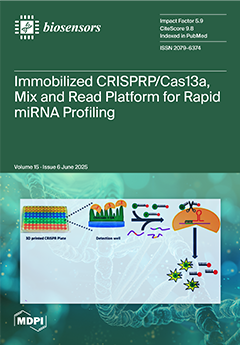Background: Diabetic neuropathy, particularly in its autonomic form, is often underdiagnosed despite its clinical significance. Electrochemical skin conductance (ESC), measured by SUDOSCAN, offers a non-invasive way to assess the autonomic dysfunction. Methods: A total of 288 diabetic patients were assessed using SUDOSCAN to
[...] Read more.
Background: Diabetic neuropathy, particularly in its autonomic form, is often underdiagnosed despite its clinical significance. Electrochemical skin conductance (ESC), measured by SUDOSCAN, offers a non-invasive way to assess the autonomic dysfunction. Methods: A total of 288 diabetic patients were assessed using SUDOSCAN to measure ESC in the hands and feet. Clinical and laboratory parameters, including glycated hemoglobin (HbA1c), body mass index (BMI), blood pressure, lipid profile, and cardiovascular risk, were analyzed for correlations with ESC. Neuropathy status was evaluated, and ROC analysis was performed to assess diagnostic accuracy. Results: Sudomotor dysfunction was prevalent, particularly in patients with a diabetes duration exceeding 20 years (
p < 0.05). Men showed significantly higher right foot ESC than women (76.5 ± 13.1 vs. 74.0 ± 13.5 µS,
p = 0.041). A strong inverse correlation was found between cardiovascular risk score and right foot ESC (r = −0.455,
p < 0.001). Left foot ESC also correlated inversely with cardiovascular risk (r = −0.401,
p < 0.001) and HbA1c (r = −0.150,
p = 0.049), while a weak positive correlation was seen with BMI (r = 0.145,
p = 0.043). ROC analysis showed the highest area under the curve (AUC) in right foot ESC for autonomic neuropathy (AUC = 0.750, 95% CI: 0.623–0.877,
p < 0.001). Conclusions: This study is among the few to systematically correlate ESC with validated cardiovascular risk scores in a diabetic outpatient cohort, highlighting its potential as a novel early screening biomarker for autonomic and cardiovascular complications.
Full article






